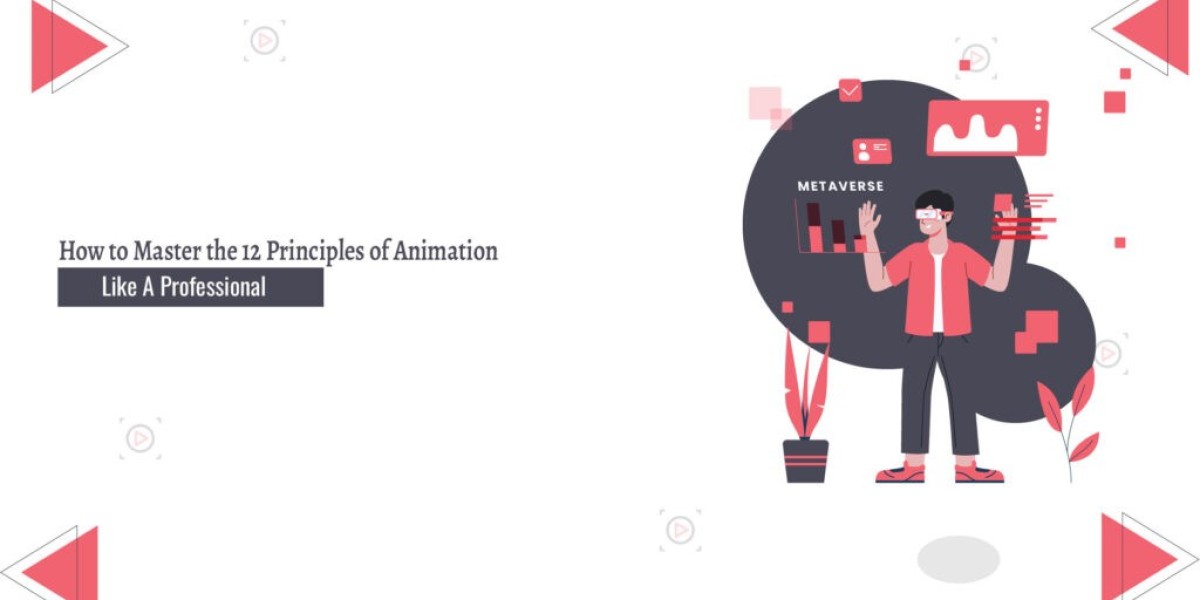What Are the Animation Principles and Techniques?
The foundation of animation as we know it today was established by Disney animators in the early 20th century. These pioneers identified twelve key principles that help ensure animation looks fluid and realistic. Today, these principles are still highly relevant across different types of animation, from 2D to 3D, CGI, and even stop-motion.
Before diving deeper into the animation principles and techniques, it’s essential to remember that these are guidelines, not rigid rules. While following them can enhance your animation, creativity often stems from bending or breaking these principles when necessary.
The 12 Fundamental Animation Principles
Squash and Stretch
This principle is one of the most recognizable and is the cornerstone of all animations. Squash and stretch give flexibility to animated characters and objects, providing a sense of weight, volume, and elasticity. Imagine a bouncing ball — when it hits the ground, it squashes, and as it moves upwards, it stretches. Even in realistic animation, subtle squash and stretch can enhance the believability of characters’ facial expressions or body movements.Anticipation
Anticipation prepares the audience for a forthcoming action. For example, before a character jumps, they might bend their knees slightly. This small action builds anticipation and allows the following motion to feel more realistic and impactful. Without anticipation, movements can appear sudden and lack clarity.Staging
This principle is about guiding the viewer's eye to the most critical action in the scene. Staging ensures that the key elements of a scene are presented in a way that communicates the story clearly. Effective use of staging in animation can prevent clutter and help establish mood, setting, and focus.Straight Ahead Action and Pose-to-Pose
There are two primary methods for animating motion. Straight ahead action involves drawing each frame sequentially from start to finish. This method can produce fluid, natural movements, but can be challenging to control. Pose-to-pose, on the other hand, is where the key positions are drawn first, and the in-between frames are added later. This approach allows for more precise control over timing and structure.Follow Through and Overlapping Action
Follow through refers to the parts of a character or object that continue moving after the main body has stopped. Think of a runner — when they halt suddenly, their hair, clothing, or other appendages continue to move slightly. Overlapping action happens when different parts of a character move at different speeds or start/stop at different times. These techniques prevent animations from feeling too rigid and add a sense of realism to the movement.Slow In and Slow Out
Natural movements don’t start or stop abruptly. In animation, slow in and slow out refer to the way an object or character takes time to accelerate and decelerate. By adding more frames at the beginning and end of a motion, animators can create smoother, more realistic animations.Arcs
Most movements in the natural world follow an arc, and so should animation. Whether it’s a swinging arm, a bouncing ball, or a character’s head turn, following an arc adds realism. Straight-line movements tend to look mechanical and unnatural, which is why understanding how arcs work is crucial in mastering animation.Secondary Action
A secondary action complements the primary action and adds more depth and complexity to a scene. For instance, if a character is walking, their arms swinging or facial expressions can be considered secondary actions. These actions should always support the primary motion and never overshadow it.Timing
In animation, timing is everything. Proper timing makes actions appear natural and gives them a sense of rhythm. By manipulating the timing of frames, animators can convey different emotions, weight, and intensity of actions. For example, fewer frames can create a sense of speed or urgency, while more frames slow down the action and add gravity or suspense.Exaggeration
Exaggeration adds a dynamic and expressive quality to animations. Even in realistic animations, a slight exaggeration can make movements more interesting and emotionally resonant. In cartoony animations, exaggeration is often taken to the extreme, making characters and actions larger than life.Solid Drawing
Even in the age of CGI and digital animation, the principle of solid drawing remains essential. Animators need to understand three-dimensional forms, anatomy, weight, and balance to ensure their characters look convincing and consistent. Solid drawing lays the groundwork for creating realistic characters and environments.Appeal
Appeal is the element that makes characters likable, engaging, or interesting to the audience. Whether it’s a hero, villain, or inanimate object, ensuring the character has appeal is crucial. This doesn’t necessarily mean the character needs to be beautiful, but they should have some quality that makes them captivating to watch.
Advanced Animation Techniques
In addition to these foundational principles, mastering advanced animation principles and techniques can take your animation skills to new heights. These techniques often involve integrating modern technology and tools to create more complex, intricate animations.
1. Motion Capture (MoCap)
Motion capture is one of the more advanced animation principles and techniques used extensively in 3D animation and CGI. It involves recording live actors' movements and translating those movements onto digital characters. MoCap is widely used in video games and film production to create realistic animations that closely mimic human motion.
2. Keyframing
Keyframing remains one of the most essential animation principles and techniques, even in advanced CGI animation. The process involves setting specific key frames, which mark the beginning and end of a movement, and then creating intermediate frames (in-betweens) to fill the gaps. Modern software like Blender or Maya helps automate some aspects of keyframing but understanding the core of this technique is still important.
3. Procedural Animation
In procedural animation, computer algorithms generate movements automatically based on certain parameters, such as physics. This technique is especially useful for animating large-scale or complex simulations, like crowds or particle systems. While it reduces the manual effort required, it still requires an understanding of animation principles and techniques to achieve realistic results.
4. Rotoscoping
Rotoscoping involves tracing over live-action footage frame by frame to create animation. This technique can give animations a smooth, lifelike quality and is commonly used for visual effects in films and television. Although digital tools have made rotoscoping more efficient, it still demands an understanding of movement and the underlying animation principles and techniques.
Conclusion
Understanding and mastering the animation principles and techniques is essential for any animator who wants to create compelling, believable animations. Whether you're working on a short cartoon, a full-length feature film, or a video game, these principles provide a roadmap for success. By combining these foundational principles with modern techniques like motion capture, keyframing, and procedural animation, animators can push the boundaries of creativity and storytelling.








